Transcription of Designing for Veterans - Vets.gov
1 Designing for Veterans A Toolkit for Human-Centered Design POWERED BY DEPARTMENT OF Veterans AFFAIRS CENTER FOR INNOVATION October 2015 Version TABLE OF CONTENTS An HCD Toolkit for VA Employees 6 Useful Frameworks 45 Step: Pitch and Execute the Concept 80 Root Cause Analysis 46 Build the Pitch 81 The HCD Philosophy 7 Prioritize Customer Needs 47 Summarizing the Elevator Pitch 82 The Human-Centered Design Process 12 Compile a Research Findings Report 48 Step: Track and Learn Going Forward 83 An Interactive Toolkit and Menu 13 Discover Checklist 49 Evaluate Outcomes 84 Tracking Against Metrics 85 FRAME 14 DESIGN 51 Create a Learning Plan 86 Steps and activities 15 Steps and activities 52 VA Innovators Network 16 Revolutionizing HIV Testing 53 Deliver Checklist 87 Step: Problem Framing 17 Step: Craft Design Principles 54 APPENDIX 89 Identify the Problem 18 Templates 89 Step: Generate Ideas 55 STEEP Framework 90 Step: business Framing 20 Group Ideation and Clustering 56 Empathy Map 91 Define the Ambition Level 21 Step: Develop Concepts 58 5 E s 92 Step.
2 Project Framing 22 Ten Types of Innovation Framework 59 Fishbone Analysis 93 Determine Scope and Metrics 23 Customer Needs Assessment 94 Step: Evaluate and Prioritize Concepts60 Write a Problem Statement 24 business model Canvas 95 Concept Evaluation 61 Create a Project Plan 25 Causal Loop 96 Balanced Breakthrough model 62 Resources 97 Frame Checklist 26 Depict the Solution 63 Additional Resources 98 Storyboarding 64 DISCOVER 28 Additional Case Studies 99 Rapid Prototyping 65 Steps and activities 29 Compensation & Pension Exam Discovery 100 Usability Testing 67 Veteran-Centric Ethnography 30 Design Checklist 68 Step: Contextual Research 31 Plan Contextual Research 32 DELIVER 70 Steps and activities 71 Step: Ethnographic Research 33 Cancer Care Center Redesign 72 Plan Ethnographic Research 34 Develop an Interview Guide 36 Step: Finalize the Concept 73 Interviewing 37 Visualize the Final Concept 74 Different Types of Interviews 38 Step: Plan for Implementation 75 Observation 39 Build a Roadmap 76 Debrief with Your Teams 40 Identify Capabilities and Resources Needed 77 Step: Identify Insights 42 business Case 78 Clustering 44 business model Canvas Framework 79 -- PUTTING PEOPLE AT THE HEART OF OUR INNOVATION EFFORTS Many people talk about the Golden Rule, but at VA, and in all customer service organizations that strive for excellence, we should aspire to the Platinum Rule.
3 Instead of treating others the way you want to be treated, we must strive to treat others the way they want to be treated. Becoming a truly Veteran centric organization means living the platinum rule and organizing ourselves and our services around the needs of Veterans . Human Centered Design (HCD) is an approach developed to help organizations produce designed products, services, and processes focused on the needs of those who will use them and benefit from them. Simply put, people are better served when their needs are aligned with the application and purpose of the products and services they use. HCD is one of the approaches that will help VA transform to best serve Veterans . HCD will serve as a foundational approach in which Veterans needs are the main focus during all stages in the development of products, services, and processes. We are examining our current programs to see if they were created with the Veteran experience in mind.
4 VA will use HCD to improve our processes so that Veterans interact with VA in ways that are best suited to fulfill their needs and wants. VA employees across the country are already putting HCD into practice and with great results. You can read some of their stories in the pages that follow, and I can t wait until we can add your stories to this list. Through our dedication to employing tools like HCD we create a VA that Veterans are proud to call My VA. Secretary Bob McDonald PUTTING PEOPLE AT THE HEART OF OUR INNOVATION EFFORTS Human-Centered Design helps us to understand what our customers really need so that we can create solutions that are relevant and important to them. It gives us the tools to put Veterans at the start and the center of our work. This means that we prioritize our efforts how Veterans would want them prioritized, and helps us make sure that when we invest in something, we re investing in the right projects, ideas, or technologies for Veterans .
5 PUTTING PEOPLE AT THE HEART OF OUR INNOVATION EFFORTS Human-Centered Design drives towards solutions. It grounds our decision-making and work in the voices and needs of Veterans and, in doing so, helps us focus our efforts and investments towards the most meaningful the most necessary solutions and innovations. By using it, we can better target solutions that are desirable, feasible, and viable for Veterans and VA. Desirability: Does the solution serve the needs of Veterans ? Does it improve the experience for Veterans ? Feasibility: Can the solution be excecuted? What assets and capabilities must we improve or create to build it? Who else should we partner with? Viability: Will the solution have a significant, positive impact on VA? How does it align with VA goals and aspirations? - - -An HCD Toolkit for VA Employees Human-Centered Design is a highly versatile and adaptable approach and THE TOOLKIT WILL: Orient you and your team to the HCD process, its tools, and the purpose and outcomes of each stage of the process set of methods that can nimbly respond to a wide array of unique and nuanced challenges.
6 This toolkit is a resource that can give you a strong foundation Provide the information to plan and execute key activities at each stage Point to links and resources where you can learn more and deep dive on different subjects Give you the skills to get out the door so you can learn by doing and start Designing for Veterans to learn by doing. It will introduce you to the HCD process, goals, and activities you can use with your teams to design and deliver new programs, services, and products for Veterans . It THE TOOLKIT WILL NOT: Dictate what happens on each day of your project, that will vary by each team and challenge you re tackling Replace the lessons you will learn by doing Replace all aspects of how you work; human centered design enhances and complements the work we re already doing starts with a simple step: going out and talking to Veterans , their supporters, and other partners.
7 Provide a comprehensive, single resource on all things human centered design; the community around human centered design is vast and vibrant and there are more resources available to practitioners at every level of interest and expertise. You can see some of them here. The HCD Philosophy Human-Centered Design is built on thinking and acting differently in order to gain a deep understanding of our customers and the challenges facing them. First and foremost, it requires a high degree of curiosity and empathy. A few other behaviors that support this are: BE OPEN-MINDED BE COLLABORATIVE BE ADAPTIVE BE OPEN-MINDED We all see and make sense of the world based on our past experiences, but it s important when tackling complex problems to be open-minded. Confront your assumptions. As Einstein put it: we cannot solve our problems with the same thinking we used when we created them.
8 SOME TIPS Be conscious. Practice and remind yourself frequently that you want to approach the design problem with fresh eyes. Be unbiased. Observe and engage without judging participants actions, circumstances, or decisions. Question everything. Look critically particularly at the things you think you already understand. Be curious. Assume a posture of wonder and curiosity especially if circumstances seem familiar or comfortable. Find patterns. Look for threads and themes that emerge across interactions with Veterans . Really listen. Forget about the agenda and soak in the moment. Absorb what your participants say and how they say it. BE C OLL ABORATIVE Being collaborative doesn t just mean being polite or sharing the work load. Learn from each other, challenge each other, and disagree with each other. By involving diverse opinions and skillsets in your team, you ll come to a richer understanding and create stronger solutions.
9 SOME TIPS Embrace differences. Bring in many different types of people, viewpoints, and backgrounds as often as possible to help tackle the problem from different angles. New approaches lead to new solutions. Trust each other. Facilitate an environment where you can ask questions that may seem rudimentary and patiently explain tradecrafts and subjects that are unfamiliar to others. Create an engaging workspace. Develop a space and plan events that will foster creativity. Doing things differently will help you think differently. Document frequently. Keep track of evolving ideas and record your process as it goes, so you can share with others and collaborate remotely when needed. Have fun! Enjoy the journey and the process. It s difficult at times, but incredibly rewarding. BE ADAPTIVE The HCD process moves through uncertainty and ambiguity to greater clarity. Adapting to these hurdles with your team will help provide clearer direction.
10 By working through challenges, you ll move closer to meaningful solutions and become better and more resilient designers. SOME TIPS Embrace ambiguity. Acknowledge and accept the uncertainties you have in order to reach a more comprehensive solution. Promote continuous learning. Learn from each other and your customers. Prepare for iteration. Recognize that your path will be non-linear and require constant iteration as you refine your understanding of the challenge and solutions. Strike a balance. Appreciate the small details and moments in the process without losing sight of the bigger picture. Course-correct often. Adapt your team s approach to learning based on shifting perspectives and avoid jumping to conclusions. Mindsets to watch out for .. We all fall into mental traps. We ve outlined below some of the traps we ve found ourselves. I m a Vet, so I understand what all Vets need.
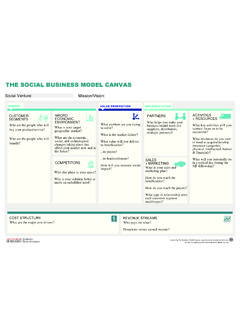
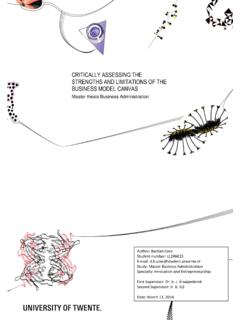
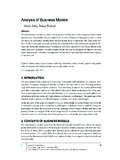

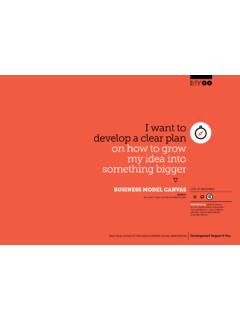
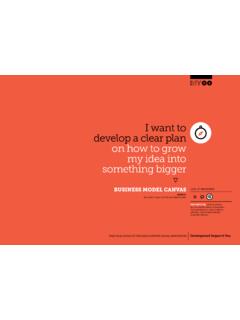

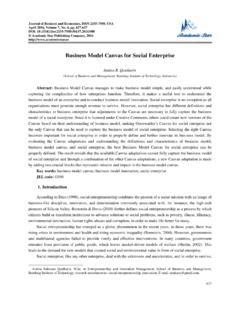

![CWT 1dbX]Tbb <^ST[ 2P]ePb 3TbXV]TS U^a) …](/cache/preview/0/6/9/7/0/6/d/e/thumb-069706de32ac780ef219ca36b5ba0904.jpg)